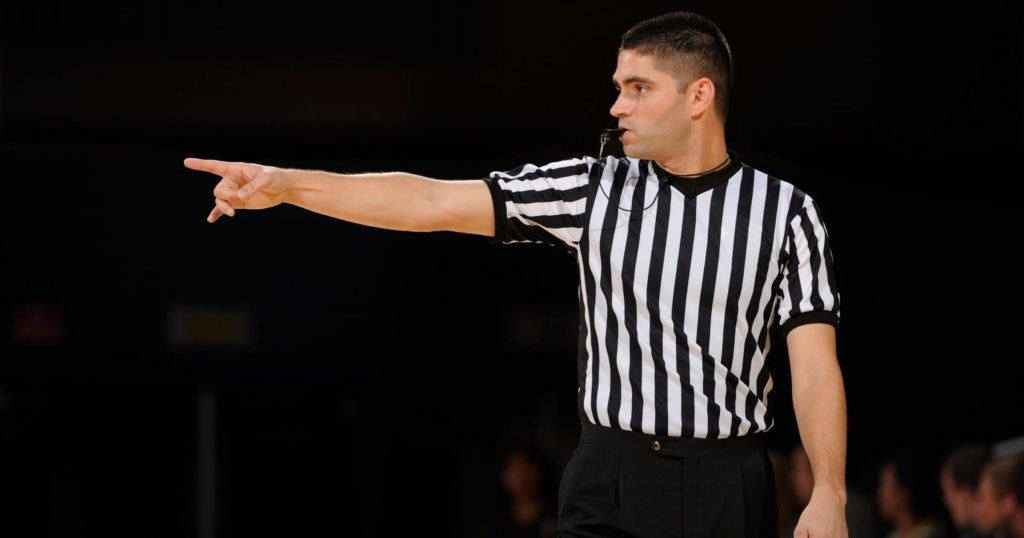You likely imagine literal screens to protect something.
A tempered glass screen protects our phones from the damage our clumsy hands may cause. That screen on your windows prevents unwelcome intruders, potentially harmful insects, and flies from entering the house.
A screen functions very much like in the same concept when it comes to basketball. It aims to protect something—the ball in your possession and the advantage to shoot baskets and gain points.
An illegal screen is a violation in basketball where the screener moves, hits and pushes the defender as the screen takes place. A clean screen is one where the screener doesn’t move and provides some space for the defender.
What is an Illegal Screen in Basketball?
Teams can be creative in making screens to strengthen their strategy. Players must be careful not to commit an illegal screen when executing their game plan into action. A player setting the screen must remain stationary and avoid contact with the defender from the opposing team.
As a general rule of thumb, the screener must set a reasonable space between him and the defender, giving the latter a fair opportunity to avoid the screen.
Motions like leaning in, pushing, and hitting the opponent can be counted as examples of an illegal screen in Basketball.
What Does Screen Mean in Basketball?
A screen is an offensive tactic wherein a non-ball-handling player positions their body between a teammate and a defender from the opposing team.
The screener’s supporting role is crucial for the entire team in minimizing the opponent’s opportunities to steal the ball or block the shot or pass.
You can think of it as an imaginary wall that guards a teammate, especially the ball-handling player, against the opposing team players while opening an ample space to either shoot or pass or attack the basket.
While players who have a large build make the best screeners, every team member assumes this role when he’s not the ball handler. It’s what every player mostly does the entire game, whether an on-ball screen or an off-ball screen.
As the names suggest, an on-ball screen happens when you’re shielding a teammate who has the ball, whereas an off-ball screen means you’re screening for a player without the ball.
What happens when there’s an illegal screen?
If there weren’t a rule in the playbook against the illegal screen, basketball would look like a chaotic sport with lots of pushing and hitting among the players, resulting in injuries.
Here are a few examples of what is an illegal screen in basketball.
- Illegal Use of Hands. The screener holds, pushes, or hits the player from another team.
- You are extending your Arms. Extending your arms to block the defender is a no-no—you’ll get an automatic call for doing this. Remember always to keep your elbows in to avoid illegal screens.
- It extends the Lower Body. Sticking your foot, knee, or hip out is also considered an illegal screen. Aside from not giving the defender a fair chance to get around, it can also cause injuries that could otherwise be avoided.
- Leaning in and Not Giving enough space. You will be called for an illegal screen when you lean into the defender. On the other hand, on a back screen, not giving at least one step distance from the defender makes the screener a violator.
Understandably, you might be unwittingly committing an illegal screen at times because you’re so engaged in the game and so focused on increasing your score.
However, if players in the offense are not careful, a single call for an illegal screen can be costly for their team.
What is the call and violation for an illegal screen?

The referee whistles at the player committing any of those examples above. Of course, it is the official’s discretion whether or not a player has violated the rule against criminal screening.
Many other situations are not described in this article.
When a player is called for an illegal screen, the referee imposes an offensive foul.
The offense loses possession of the ball, which is awarded to the other team. In some cases, the defense gets free throws as well.
Tips to Avoid an Illegal Screen in a Game
Ball turnover. Free throws. If you’re not careful and become too assertive, the result you’re expecting might be the other way around—you’re giving the defense an express pass to advance in the game. You will be hurting your team.
Here are some of the handy tips to remember to avoid that altogether.
1. Avoid moving
Because a screener should be stationary, avoid movements when you’ve already planted your screen.
2. Leave a reasonable amount of space for the opponent
According to the NBA rulebook, you must provide at least a step away for the player from the other team to have an opportunity to move out of the way.
3. Avoid too much contact with the defender
Don’t bump, push, or lean in towards him. The basic rule is that the screener should bump shoulder to shoulder with his teammate but not with the opponent.
4. Do not move with the defender side by side while setting the screen
This would constitute moving, and you will be called for an illegal screen.
5. Anticipate
Anticipate where the teammate you will be screening for will position himself, so you’ll have time to think in advance about how to set the screen firmly without needing to make unnecessary movements.
6. Set your feet just a bit more than shoulder-width apart
That’s already a firm, broad base that will enable you to avoid falling over when the defender happens to bump onto you. Be careful not to stick your hip, foot, or knees out, to avoid injuring other players.
7. Use your hands to protect sensitive areas
Don’t extend your arms. Elbows should always be in.
8. Know the rules
If you’re a beginner in the sport, study the rulebook carefully and practice doing legal screens with your teammates. Just remember the basic rules to avoid committing an illegal screen.
Conclusion
So, there you have it, folks. We’ve discussed what an illegal screen in Basketball is. We hope the tips we shared here will help you gain ground in the game. Keep shooting!
Read these next:

3 thoughts on “What is an Illegal Screen in Basketball? Explanation + Tips”